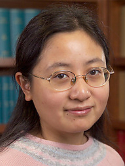Surgical ovarian suppression for adjuvant treatment in hormone receptor positive breast cancer in premenopausal patients Journal Article
| Authors: | Oseledchyk, A.; Gemignani, M. L.; Zhou, Q. C.; Iasonos, A.; Elahjji, R.; Adamou, Z.; Feit, N.; Goldfarb, S. B.; Long Roche, K.; Sonoda, Y.; Goldfrank, D. J.; Chi, D. S.; Saban, S. S.; Broach, V.; Abu-Rustum, N. R.; Carter, J.; Leitao, M.; Zivanovic, O. |
| Article Title: | Surgical ovarian suppression for adjuvant treatment in hormone receptor positive breast cancer in premenopausal patients |
| Abstract: | Objective Ovarian suppression is recommended to complement endocrine therapy in premenopausal women with breast cancer and high-risk features. It can be achieved by either medical ovarian suppression or therapeutic bilateral salpingo-oophorectomy. Our objective was to evaluate characteristics of patients with stage I-III hormone receptor positive primary breast cancer who underwent bilateral salpingo-oophorectomy at our institution. Materials and methods Premenopausal women with stage I-III hormone receptor positive primary breast cancer diagnosed between January 2010 and December 2014 were identified from a database. Patients with confirmed BRCA1/2 mutations were excluded. Distribution of characteristics between treatment groups was assessed using χ 2 test and univariate logistic regression. A multivariate model was based on factors significant on univariate analysis. Results Of 2740 women identified, 2018 (74%) received endocrine treatment without ovarian ablation, 516 (19%) received endocrine treatment plus ovarian ablation, and 206 (7.5%) did not receive endocrine treatment. Among patients undergoing ovarian ablation 282/516 (55%) received medical ovarian suppression, while 234 (45%) underwent bilateral salpingo-oophorectomy. By univariate logistic analyses, predictors for ovarian ablation were younger age (OR 0.97), histology (other vs ductal: OR 0.23), lymph node involvement (OR 1.89), higher International Federation of Gynecology and Obstetrics (FIGO) stage (stage II vs I: OR 1.48; stage III vs I: OR 2.86), higher grade (grade 3 vs 1: OR 3.41; grade 2 vs 1: OR 2.99), chemotherapy (OR 1.52), and more recent year of diagnosis (2014 vs 2010; OR 1.713). Only year of diagnosis, stage, and human epidermal growth factor receptor 2 (HER-2) treatment remained significant in the multivariate model. Within the cohort undergoing ovarian ablation, older age (OR 1.05) was associated with therapeutic bilateral salpingo-oophorectomy. Of 234 undergoing bilateral salpingo-oophorectomy, 12 (5%) mild to moderate adverse surgical events were recorded. Conclusions Bilateral salpingo-oophorectomy is used frequently as an endocrine ablation strategy. Older age was associated with bilateral salpingo-oophorectomy. Perioperative morbidity was acceptable. Evaluation of long-term effects and quality of life associated with endocrine ablation will help guide patient/provider decision-making. © 2021 BMJ Publishing Group. All rights reserved. |
| Keywords: | gynecologic surgical procedures; surgical oncology |
| Journal Title: | International Journal of Gynecological Cancer |
| Volume: | 31 |
| Issue: | 2 |
| ISSN: | 1048-891X |
| Publisher: | Lippincott Williams & Wilkins |
| Date Published: | 2021-02-01 |
| Start Page: | 222 |
| End Page: | 231 |
| Language: | English |
| DOI: | 10.1136/ijgc-2020-001966 |
| PUBMED: | 33273020 |
| PROVIDER: | scopus |
| PMCID: | PMC8409154 |
| DOI/URL: | |
| Notes: | Article -- Export Date: 1 March 2021 -- Source: Scopus |
Altmetric
Citation Impact
BMJ Impact Analytics
MSK Authors
Related MSK Work


















